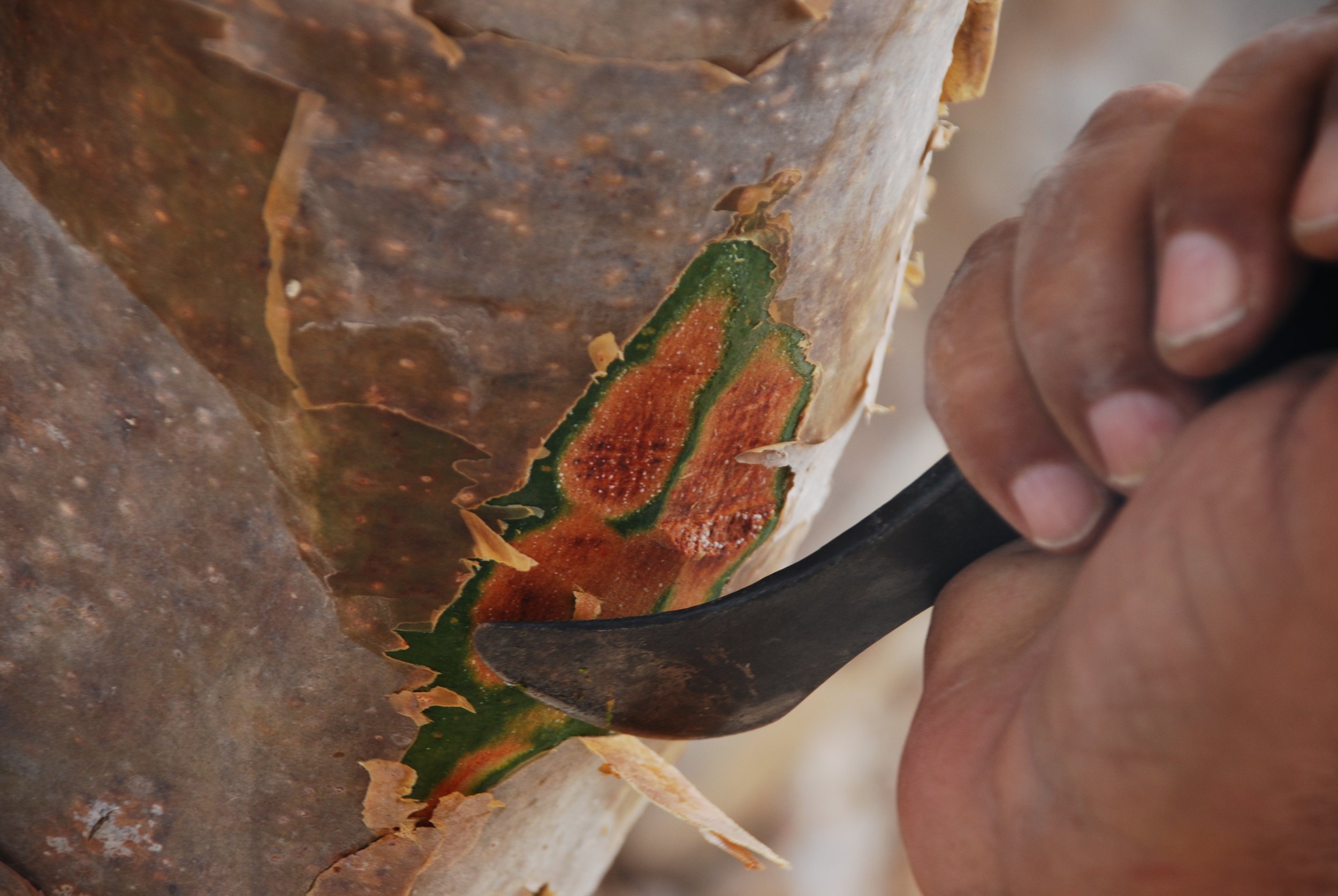Our frankincense, Boswellia sacra, is collected from a variety of places in the governorate of Dhofar, southern Oman. It grows wild in many different areas, but that terroir has something vital and ubiquitous, even with variations in elevation, humidity, proximity to the ocean, heat, and the like.
Oman has always carefully controlled the export of frankincense, and harvesting can only be done in accordance with local tribal policies.
I know there was a lot of kerfuffle regarding Frankincense being endangered and cut indiscriminately. While I can’t speak for Somaliland, I can tell you that Oman has been very careful and has had a planting policy since the mid 1990’s. It's very controlled in Oman and I am happy to say that the push, by certain huge Western essential oil MLM’s, to control the frankincense, which belongs to Oman, not to those companies, is finally settled, at least for now.
Our frankincense is harvested in season, and we send it to our small eco-friendly distillery in Muscat, where we hydro-distill using ten copper alembics on our own recirculating cooling system. Our system makes no waste, everything is recycled. We have no chemicals at all; we work with water and temperature. It’s a low-tech process, with its roots in ancient distillation techniques. The system requires a sharp eye and nose, as we do everything by hand and interpret the alchemical subtleties as they occur. This is a highly skilled and laborious process.
We also order myrrh (Commiphora myrrha,) every so often from Somalia to make our co-distillate.
How to use Frankincense. Please visit our American website
Frankincense & Cancer Please visit our American website
